An extremely unusual variety from Siberian breeders - the Japanese crab tomato, which will not leave anyone indifferent
If you love unusual varieties of tomatoes, then the Japanese crab is exactly what you need. The fruit, resembling a crustacean in appearance, will delight you not only with an interesting shape, but also with excellent taste.
The characteristics and description of the variety, photos, rules for caring for a tomato and the secrets of a bountiful harvest - in our review.
The content of the article
Description of the variety
The breeders of the Demetra-Siberia agrofirm from Barnaul became the originators of the tomatoes. In 2007, the variety was registered in the State Register of the Russian Federation. The description of the tomatoes indicates that they are suitable for growing in greenhouse conditions and outdoors throughout the country.
Distinctive features
Indeterminate variety, in open ground the bushes reach a height of 100-120 cm, in greenhouses - 200 cm. The first flowers are formed above 7-8 leaves, 6-10 ovaries grow on each brush. Leaves are light green, medium in size. The ripening time of the fruits is average, we get the first tomatoes 110-115 days after the sprouts appear.
Fruit characteristics and yield
The fruits of the Japanese crab are deep pink, round, flattened to the stalk. Tomatoes got their name for their ribbing - pronounced slices resemble crustacean claws.
Other characteristics of the fruit:
- not dense, but fleshy, juicy pulp;
- pleasant tomato taste and aroma;
- pronounced sugar content;
- 5-6 seed chambers;
- weight from 250 to 350 g.
Interesting! According to the reviews of vegetable growers, the maximum weight of the fruit that was obtained is 600 g.
Tomato yield up to 11 kg from 1 square meter (from four bushes).
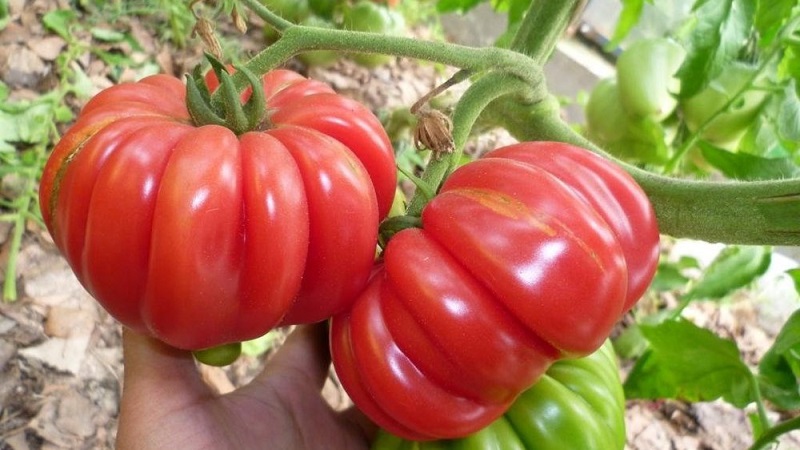
How to grow seedlings
To get seedlings, sow the seeds in the first decade of March, but remember that under favorable conditions the tomatoes will begin to stretch quickly and will be too high by the time you move to the beds.
Seed preparation
Preparation will help you speed up seed germination, reduce the risk of infections, and increase tomato yield.
First of all, select the planting material. Empty the grains and examine them - throw out the small, crooked and empty seeds. Prepare a saline solution: dissolve a tablespoon of salt in a glass of water. Dip the seeds into it. After 15-20 minutes, remove the grains that have floated to the surface and discard, and take the grains that have sunk to the bottom for planting.
Warm up the seeds: spread them on a cotton cloth or newspaper, in bags and place them on the battery.
Disinfect the planting material. Prepare a 1% solution of potassium permanganate: dissolve a teaspoon (no top) of potassium permanganate in three glasses of water. Place the seeds in the solution for 15-20 minutes, then rinse them with running water.
Important! If there is no potassium permanganate, use hydrogen peroxide. Dissolve 1 tbsp in 400 g of warm (40 degrees) water. l. 3% peroxide and place the seeds in the solution for 12 hours. This method both kills infections and accelerates seed germination, but is not suitable for pelleted (with a nutritious shell) and encrusted (with a thin water-soluble layer containing disinfecting and growth-stimulating components) grains.
Place the seeds in warm water (26-30 degrees) and stir every hour for 15-18 hours (if you have an aquarium compressor, use it).This procedure is called bubbling - oxygen enrichment. The process increases germination and crop growth.
Soak the seeds in water or biostimulants: at a temperature of 20 degrees for 12 hours. Popular biostimulating drugs among Russian summer residents: "Zircon", "Epin", "Immunocytofit".
Wrap the seeds in cotton cloth and plastic and refrigerate for 8 hours. Remove to a warm room for 8 hours. Repeat the temperature change 5-6 times. Hardening will help grow frost-resistant shrubs. According to farmers' feedback, the yield will increase by 30%.
Important! Hardening is a complex process in which there is a high risk of spoiling the planting material. If you are unsure of the correct procedure, do not perform it or use all the seeds.
Place sunflower seedswrapped in cheesecloth on a flat dish (saucer or Petri dish). Moisten the fabric constantly with warm water (25 degrees). When 2-3 mm embryos appear, sow the seeds into the ground.
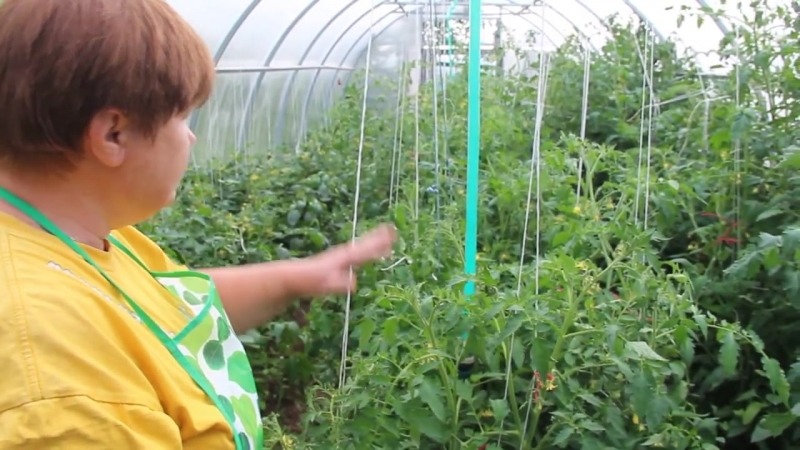
Capacity and soil
Use plastic cups, containers, bottles as containers for seedlings.
Buy all-purpose tomato soil from the store. It includes:
- humus;
- peat;
- river sand.
You can prepare the soil mixture yourself. To do this, mix:
- 1 part of the land from the garden (take from the site where cucumbers, zucchini, carrots, dill grew);
- 2 parts of non-acidic peat (pH 6.5);
- 0.5 parts of sand (river or washed);
- 1 part humus or sifted mature compost.
Add wood ash (dolomite flour), sphagnum moss and fallen needles.
Disinfect both the soil and containers before use with a solution of potassium permanganate or warm it up in the oven at a temperature of 200 degrees.
Sowing
Bury the seeds 1-1.5 cm in the ground, spray with water from a spray bottle, cover the containers with foil or glass and put them in a warm, lighted place.
Growing and care
When sprouts appear, remove the film. Water with a spoon or syringe, being careful not to get on the plants.
In the phase of 3-4 true leaves, make a pick. Add mineral fertilizing to the new soil (1 tablespoon per 5 liters of soil). Plants are planted in separate containers and added dropwise to the cotyledon leaves. 10 days after transplanting, feed with a complex fertilizer. Repeat feeding every two weeks.
Avoid getting water on the stem and leaves when watering.
Temper the seedlings, so the tomatoes will quickly get used to new conditions, it will be easier to endure a sharp change in temperature and night frosts. 2-3 weeks before the move, start taking the seedlings out into the open air: in the first days for 3-4 hours, in the last - leave them overnight.
Important! FROMobserve the air temperature during hardening: +20 during the day, + 7- + 11 at night. Do not leave seedlings in a draft, strong winds can damage weak leaves and stems.
How to grow tomatoes
Tomatoes, ready for moving to a permanent place, reach a height of 20-25 cm and have at least 6 true leaves. Plant tomatoes under the "film" Japanese crab at the age of 45-50 days. On unprotected beds - after a positive night temperature is established.
Landing
A day before planting seedlings, treat the soil with boiling water or a solution of potassium manganese. For 1 sq. m plant 2 to 4 bushes. Decide immediately on the method of tying plants:
- pegs;
- trellises;
- fastening to a wire frame;
- fastening to the mesh;
- linear mount.
Remember! Do not overtighten the loop of the tomato garter to avoid breaking the stem.
Care
Water the plants in the morning or evening with warm, settled water under the root. Avoid getting moisture on the stem and leaves. After each watering loosen and weed the soil. To reduce the amount of watering and weeding, put mulching layer (sawdust, hay, straw, agromaterial).
Apply fertilizer every two weeks, depending on the phase of plant development:
- During the growth of leaves - nitrogen.
- At the beginning of the formation of the ovary - phosphorus-potassium fertilizer.
- To preserve the ovary - feeding with the addition of boric acid.
Shape the Japanese crab into 1 to 2 stems. Rest stepsons remove regularly. When the bush reaches a height of 2-2.5 m, pin the top.
Advice! From 6 to 10 flowers are formed on inflorescences. Leave 4-5 buds for the tomatoes to grow larger.
Tie up the bushes as they grow.
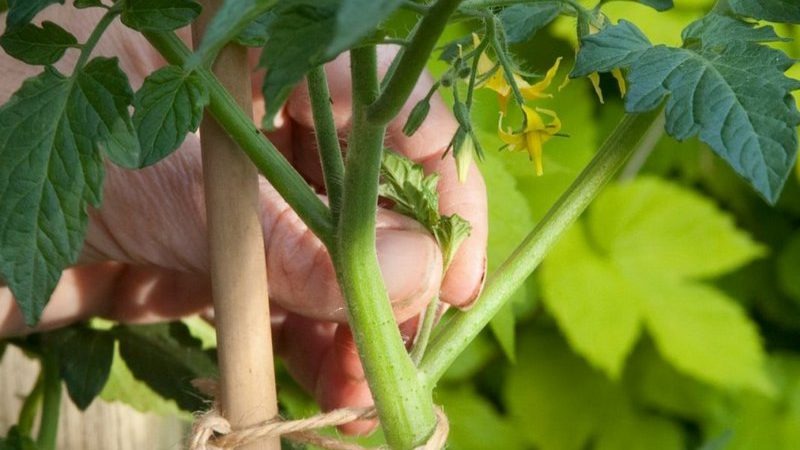
Features of cultivation and possible difficulties
Tear off excess shoots - they take up nutrients and moisture, which is why the ovary is poorly formed, and the fruits grow smaller.
Despite the fact that tomatoes are resistant to cold, when the temperature drops to + 2-4 degrees, the ovary begins to fall off. Therefore, watch the temperature regime.
Do not feed with mineral fertilizers more often than three times throughout the season, otherwise the greens will grow, and not the inflorescences.
Diseases and pests
According to the originators, tomatoes are immune to tobacco mosaic virus, root and apical rot.
At high humidity (in an unventilated greenhouse), low temperatures and frequent rains, treat the bushes with Fitosporin to prevent fungal diseases.
Tomatoes are attacked by harmful insects... For aphids and thrips use the preparation "Bison", for the Colorado potato beetle - "Prestige", and for whitefly - "Confidor".
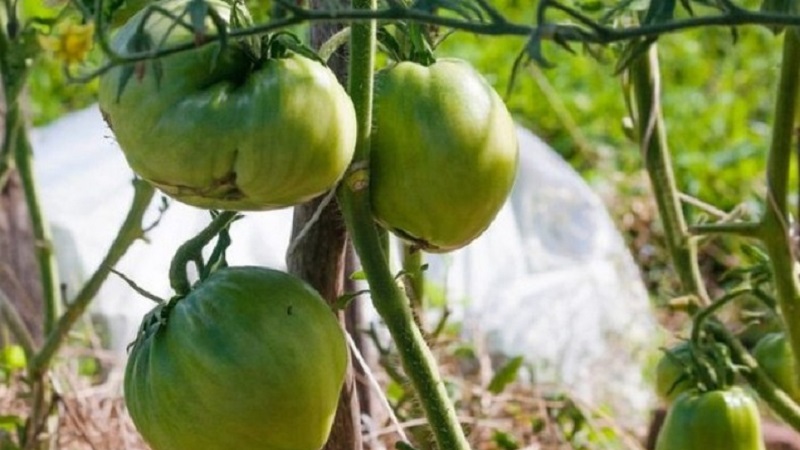
The nuances of growing in open ground and in a greenhouse
In the open field, pinch the tip over the fifth brush, in the greenhouse over the seventh.
In open beds, in constantly hot, sunny weather, fertilize with nitrogen, and in the absence of the sun, potassium.
Ventilate greenhouses so that fresh air flows to the bushes and insects fly in, which will pollinate the tomatoes. Make sure there are no drafts.
Harvesting and application of the crop
The first fruits will ripen 110-115 days after germination. Use them fresh: for salads, sandwiches, slices. Make tomato paste, lecho, appetizers, or gravy. For juice and pickling in whole-fruited form, Japanese crab is not the best choice: the juice is thick, large tomatoes do not pass through the neck of the cans.
Tomatoes do not keep well, so consume them within 7-10 days after removing them from the bush.
Remove tomatoes when they are fully ripe (all pink), they may deteriorate when ripe. If there are no other options, remove the dense green area near the stem when using unripe fruit.
Tomatoes are varietal, not hybrid... Collect seeds for planting next season.
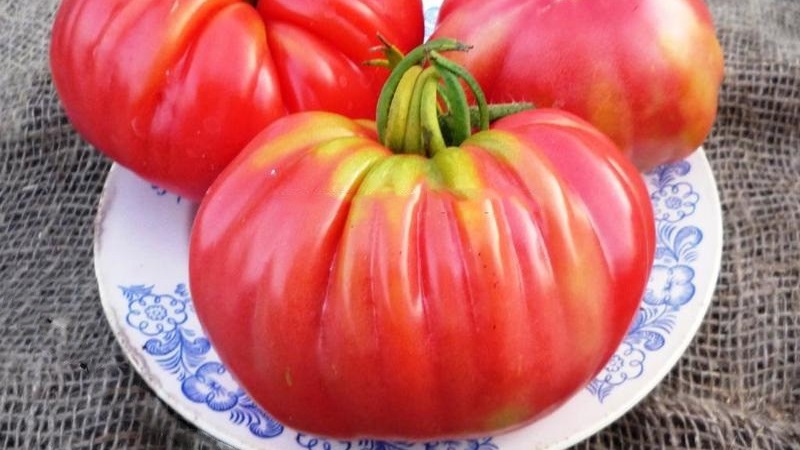
Advantages and disadvantages of the variety
Summer residents love this variety for its unusual shape.
Other pluses of the Japanese crab:
- large size;
- taste, aroma;
- yield;
- resistance to temperature extremes and immunity to diseases.
Minuses:
- difficulty in leaving: the need for garters, molding and removal of stepchildren;
- falling off of the ovary at a temperature of + 2-4 degrees;
- impossibility of long-term storage and transportation.

Farmers reviews
Summer residents note that the plants give a high yield, subject to the required temperature regime. What else farmers have encountered when growing "crustacean" tomatoes, read below.
Ekaterina Ivanova, Moscow region: “I have been breeding Japanese crab tomato for several years. Tomatoes are very tasty, I use them not only fresh, but also prepare juices, sauces and other pickles. I do not experience any particular difficulties in leaving, the bushes are high, reaching 150-160 cm, I form in 2 trunks, periodically a stepson. The tomatoes are large and well kept. "
Tatiana Nechaeva, Perm Territory: “For several years I have been growing this tomato without shelter in the risky farming zone in the north of the Perm Territory, and did not experience any problems. An exception is the cold summer of 2014. In the period of low temperatures (up to +2 degrees), fruits were weakly set. In the greenhouse, the harvest was excellent, only late due to lack of light and heat. I would also like to note the good quality of the seeds: the germination is excellent, no re-grading was observed ”.
Alexander Kharlashin, Perm: “I have never planted pink tomatoes before. Somehow in the family they are not particularly to taste. But last year, the store was persuaded to buy a variety of Japanese crab. He surprised by his fertility, and my family got even more surprise and delight from the taste. Now this tomato takes the most honorable place in the greenhouse. My recommendations!"
Irina Gorko, Tomsk: “Advantages: fruitful, little late blight, tasty. Disadvantages: some fruits had a zone of dense white-green fiber in the region of the stalk. It tastes juicy and meaty! There is one nuance due to which, in my opinion, my tomatoes were deficient (except for watering with ice water): they were deprived of the morning (eastern) sun during the entire first half of the day. The variety, in my opinion, is very productive. I did not track the keeping quality, since everything was eaten, in the refrigerator or in a cool underground a ripe red tomato lay with me for about a week. "

Conclusion
Tomatoes Japanese crab bear fruit in any conditions, but in the greenhouse they give a more bountiful harvest - up to 11 kg per sq. m. Bushes need a garter, shaping, pinching. To increase fruit, remove 2-3 inflorescences, leaving 4-5 flowers, and pluck off the leaves.
Use the fruits for making fresh salads, in canning: for making lecho, sauces, snacks. The disadvantage of the variety is the inability to transport and store tomatoes for a long time (only up to 7-10 days).